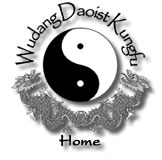A BRIEF INTRODUCTION TO WUDANG QI GONG
‘Qi gong’ is a practice that incorporates breathing techniques and specific movements and postures to help adjust balance in a practitioner’s body and mind, heighten feeling, internal awareness, and bodily communication, and to promote an overall more balanced and healthy existence. As a result of aligning the consciousness and the body in more harmonious communication with eachother we find the body healthier, with a stronger immunity to protect against invasive forces like sickness and disease. As well as specific practices for attaining longevity and making the body and mind overall stronger, more robust, and proficient. Having more internal awareness and stronger bodily communication can also help practitioners to find their individual strengths and weaknesses, develop life goals, and learn to train their bodies and minds together.
Wudang qi gong has two systems of qi gong practice: hard qi gong and internal, or soft, qi gong. Hard qi gong can also be called ‘tong zi gong (桶子功),’ or ‘bucket’ qi gong. There are three levels of training in the practice of hard qi gong; beginning with basic level training and moving to the more advanced stages.
The practices of qi gong involve specific breathing technique, as well as the practice of swallowing air in order to cleanse the internal organs and digestive tract, gathering, distributing, and circulating qi throughout the body, storing qi, compacting qi, using qi for explosive power and protection, and strengthening the internal organs. Hard qi gong practice trains the tendons, bones and skin, while internal qi gong practice focuses on the cultivation of ‘essence’, qi, and ‘spirit’.
Combining these practices together with the conditioning of the skin, muscles, and tendons through repeated hitting with various technique and instruments and various movements can increase the strength of the external body and internal organs. The practice of qi gong is meant to awaken and strengthen the vast potential each individual has; both internally and externally. It can also teach a practitioner how to be in better communication with their body and thus have better internal coordination as it has been conditioned to higher levels of health and power. Once a practitioner of hard qi gong has trained the higher levels of training they can then break objects over their body and be struck with kicks, punches, etc. without sustaining injury.
Internal qi gong practice can also be called ‘soft’ qi gong. Buddhist practice focuses on the cultivation of the mind or spirit with little attention paid to the body. Daoist qi gong’s main focus is on the body and health preservation. Both are considered internal/soft qi gong. In internal qi gong the focus is placed on deep breathing without allowing the thoughts to wander too far. The practice of soft qi gong does not require the use of large amounts of physical energy. This type of training can help to open the lungs and strengthen respiration, strengthen the organs, and also open the energy channels and meridians of the body. We practice both hard qi gong and soft qi gong to connect the body as a composite whole.
The benefits of internal qi gong practice are vast. Internal qi gong practice is beneficial for all people and can help with physical and emotional ailments that a practitioner may be suffering from. The main practice of internal qi gong is the practice of taking in healthy fresh qi and expelling the waste, toxins, and unhealthy qi that have accumulated in our bodies over time. Alongside this practice is the practice of collecting qi and storing it in the dan tian to strengthen the body and revitalize the energy, and the spirit. After extensive practice and enough qi has been culivated in the dan tian of a practitioner they can then learn to use it to strengthen the five organs and also to use the mind an intention to circulate qi to open the body’s energy channels and meridians. The result being that a practitioner’s body and mind then gradually returns to the calm, soft, supple state of a child.
The practice of qi gong is a practice that people of all body types, ages, and goals can partake in. The practice of qi gong can help strengthen a practitioner's external and internal bodies, vital energies, spirit. By awakening the potential of our bodies, strengthening their immunity and inter-communication, and understanding them more we can eventually have success in having a clean and calm body and mind.
“Note – words highlighted in italics are words that are complex in their translation from Chinese to English… etc.”
|







